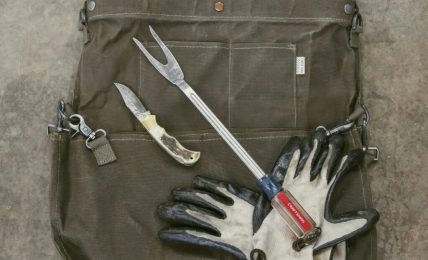Videos showed high waves and large whitecaps rocking the cruise ship Carnival Sunshine as it returned to port in Charleston, S.C., on Saturday. (Brad Morrell/Storyful)
Matthew Branham and his fiancée, Madison Davis, were lying by a Carnival Sunshine pool on Friday aboard a cruise returning to Charleston, S.C., from the Bahamas when an announcement came over the loudspeaker. The captain was expecting rougher weather that evening, but there was nothing to worry about. So Branham and Davis didn’t worry.
As the day went on, “We noticed it started getting cooler in the afternoon — much, much cooler,” said Branham, 25, of Castlewood, Va. “And then it was like a switch was flipped, and it literally turned into a nightmare.”
En route back to Charleston Friday night into Saturday, the Carnival Sunshine navigated into a strong storm system that battered the southeast over the holiday weekend. Videos emerged on social media showing cabins and hallways flooding, shop floors littered with destroyed merchandise and leaking ceilings. Passenger Brad Morrell snapped a photo of an automated instrument map reporting a 69 knot, or 79 mph, wind.
Carnival said in a statement that the weather was unexpectedly strong, causing conditions that were rougher than forecast, but that its fleet operations center team, which relies on outside meteorology resources for itinerary planning, “coordinated to keep the ship in its safest location.”
“Attempting to sail out of the large front could have been dangerous,” the statement continued. “The ship proceeded to the port as soon as the weather began to clear.”
Strong Southeast storm slams Carolinas
Carnival said the captain made “several announcements about the weather and the delay it caused in returning to Charleston, asking guests to use extra precaution while walking around the ship.” Additionally, “some of the worst weather occurred in the overnight hours when announcements are not typically made, but guests and crew were safe.”
The ship’s medical staff did help a “small number” of guests and crew members who needed minor assistance following the storm. Despite the significant damage and a delay in schedule, Carnival Sunshine embarked on its next five-day Bahama sailing on Saturday.
UP NEXT
From their sea-view room, Branham and Davis watched as waves surged over their window and braced themselves as the 892-foot-long ship lurched in the storm.
“Waves were hitting the boat so hard that it was like an earthquake experience, jarring you like a really rough roller coaster — even in the middle floor,” Branham said.
They were told to stay in their cabins. Meanwhile, Branham said, TVs were falling off walls, and glassware was sliding off shelves and shattering on the floor. “You could not stand up in your room,” he said. “You could be thrown from the bed.”
They packed up their belongings when their floor started to flood and took shelter in a main lobby area.
“All of the employees were sprinting downstairs with life vests,” Branham said. “There were little kids besides us screaming and crying and throwing fits.”
Throughout the storm, Branham wondered why there weren’t more announcements from Carnival staff. Besides the warning of rougher seas earlier Friday and one Saturday morning after they’d weathered the storm, Branham said they weren’t given any official updates on their situation. When he asked workers what was going on, they told him not to worry.
“But you see rooms flooded, and you can pick up a handful of sand and you’re kind of like, ‘What in the world? Why is nobody telling us anything?’” Branham said.
Jim Walker, a maritime lawyer and cruise industry legal expert, says his firm has been contacted by some Carnival Sunshine passengers who were injured during the storm, including a man who says he was struck by a door and broke his foot. Others have asked him about the potential for a class-action lawsuit.
While Walker said passengers should make their complaints known to Carnival, he doesn’t believe filing a lawsuit would be an efficient next step. Instead, impacted passengers can ask Carnival for a refund or a credit for another cruise, although there’s no guarantee the cruise line will grant such requests.
Pete Peterson, owner of Storybook Cruises, which is affiliated with Cruise Planners, said cruise ships keep a close eye on weather developments and will adjust their itinerary depending on the severity of the storm.
“Cruise lines monitor the weather all the time. They’re not going to put their passengers in harm’s way,” said Peterson, who has been a cruise adviser for more than 20 years and has sailed on nearly 60 cruises. “Obviously, some cruise lines are better at doing this than others.”
In 2016, Royal Caribbean’s Anthem of the Seas returned to port after cruising into a “bomb cyclone,” which damaged the ship amid winds gusting to 100 mph. The ship sailed into the remnants of Hurricane Hermine seven months later, causing additional problems.
To ensure the safety and comfort of its passengers, a cruise ship can alter its course and circumvent the rough weather system. In stormy conditions, the crew can deploy the stabilizers, which will prevent the ship from rolling and bucking.
“You don’t experience the up and down,” Peterson said. “It’s not as rough a ride.”
Both approaches can add to a cruise line’s expenditures, Peterson said. Stabilizers slow the vessel, thereby consuming more fuel. Sailing around the storm can take longer than the original route and disrupt the company’s cruise schedule, leading to delays or cancellations. The cruise line may have to reimburse passengers or provide them with future credits because of the inconvenience.
“When they do something like that, it’s going to cost them money,” Peterson said.
Craig Setzer, a meteorologist and hurricane preparedness specialist, said that even with the hurricane-like conditions and flooding, “I would never be in doubt of the vessel’s integrity,” he said. “Cruise ships are structurally very, very sound and can survive a lot. They’re really rugged.”
Matthew Cappucci contributed to this report.



